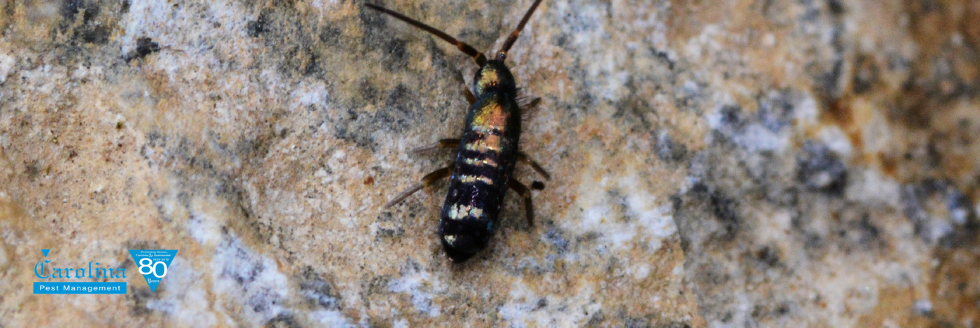Springtail Identification & Prevention
If you’ve noticed some dark, hoppy bugs around your property during winter, you may be wondering if fleas have somehow found a way to be more annoying. Thankfully (a relative term), these insects are just springtails, also known as snow fleas. Let’s find out more about this hardy pest.
What is a Springtail?

Springtails are small, hairy insects that can live in harsh environments. While most bugs will burrow in the winter to stay warm, springtails thrive in colder climates, thanks to a unique protein. These pests get their nickname “snow flea” because they bounce around like fleas, and their dark coloring makes them stand out against white snow.
Although springtails do well in the winter (partially because of the lack of competition), they can feed and spread in warmer temperatures, too. Overall, you can experience a springtail infestation any time of year.
This insect gets its name because of its large tail, which it uses as a spring to jump from place to place. Springtails keep their tail under their bodies until they need to make a quick getaway.
Where Do Springtails Live?
Since these bugs are so hardy, they’re found all over the United States. They do like moisture and humidity, so they thrive in both northern and southern states. There are over 700 species of springtails in North America.
What Do Springtails Eat?
Springtails are actually beneficial to the ecosystem because they feast on decaying plant matter. They like to snack on bacteria, fungi, algae, and other natural elements. So, even if they get inside your house, you won’t find them in the kitchen or anything (unless you have some dying plants in there).
Are Springtails Dangerous?
No, they’re not. Although they have the nickname “snow flea,” these insects are not blood-suckers. So, you don’t have to worry about them hitching a ride on your pet’s fur.
That said, springtails do breed quickly, and populations can get into the millions when food and water are abundant. In some cases, you can find a huge mass of springtails clustered together like a living pile of dirt.
Overall, springtails are more of a nuisance than anything if they get into your home. Otherwise, since they help the ecosystem, they’re not a concern out in the wild.
How to Spot a Springtail Infestation
It’s pretty rare for springtails to set up shop inside your house. But, if you do notice a bunch of them jumping around, it will likely be in an attic or basement where conditions are ripe for breeding. Remember, springtails like humidity, and they can spread in all kinds of temperatures. So, if you have a leaky basement with mildew or fungi growing, it can be a springtail buffet.
The easiest way to spot springtails is when they’re jumping around. They typically only do this when disturbed, so you will only notice them if you happen to stumble across a nesting or feeding site.
Getting Rid of Springtails and Preventing New Infestations
The most significant problem with springtails is that they can breed so quickly. So, once you spot an infestation, it can be pretty hard to remove it. That said, if you keep a clean and dry home, you shouldn’t have to worry about an outbreak. Look for food sources like damp soil or fungi and lichen. Removing these elements can force springtails to vacate your home.
Once an infestation has taken root, it’s best to call the professionals. Since springtail populations can get out of control, it’s almost impossible to remove these pests yourself.
Carolina Pest can clear out the springtails and identify spots where they may be breeding. From there, we can help you develop an action plan to keep them from coming back. Again, keeping a clean and dry home will be the best prevention, as there won’t be any reason for springtails to return.
Contact Carolina Pest Today!
Whether you have springtails or some other pest, let Carolina Pest handle the situation for you. Our years of experience come in handy, as we can identify any critter that may be giving you and your family grief. So call us today for a consultation and start living your life pest-free!
